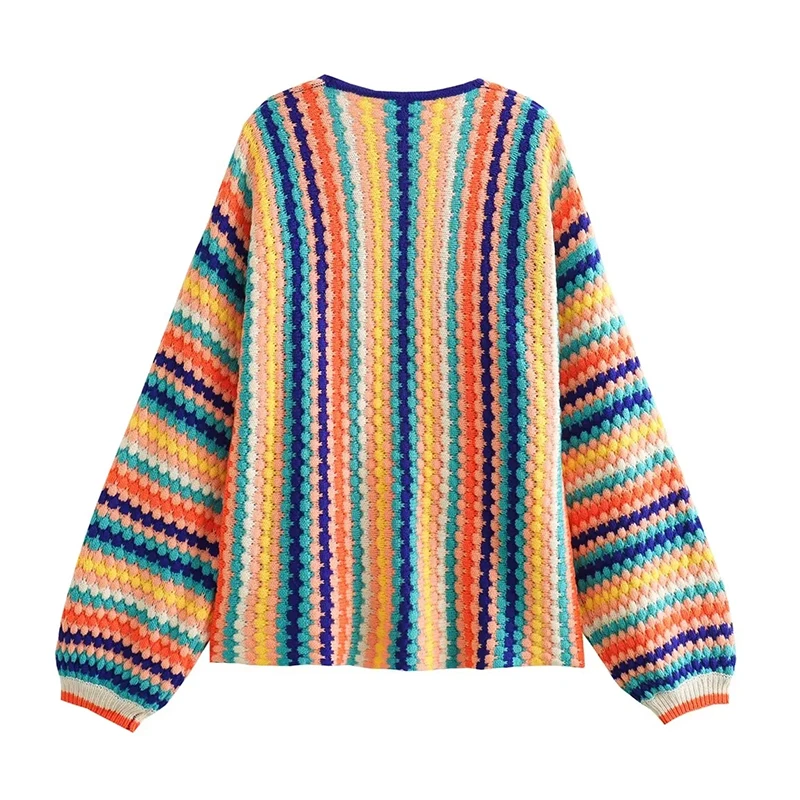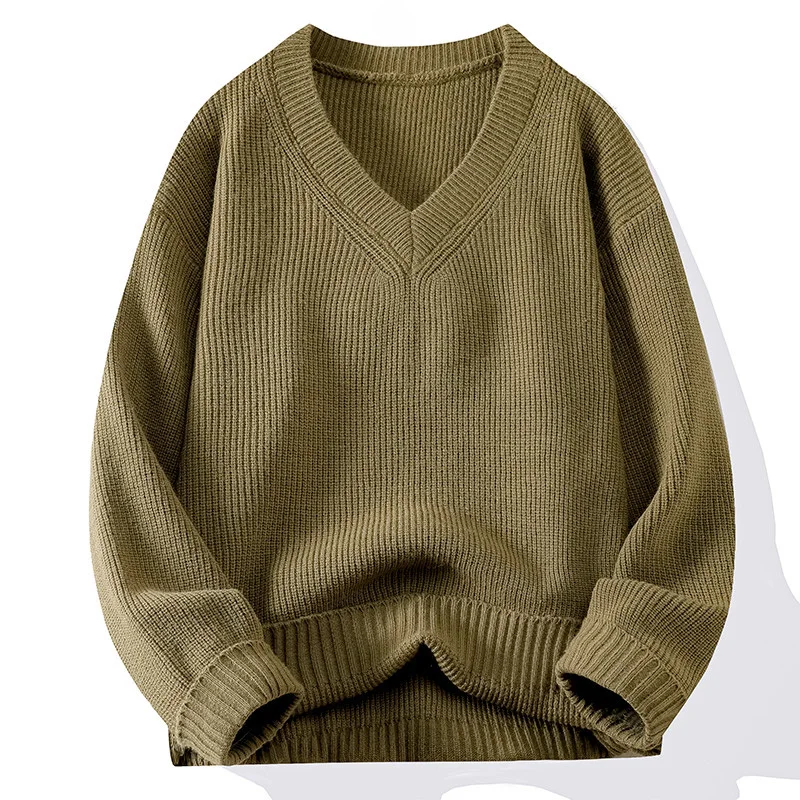Understanding Cashmere’s Luxury & Why Proper Care Matters
Cashmere is one of the world’s most luxurious natural fibers, harvested from the soft undercoat of cashmere goats that live in the harsh, mountainous regions of Central Asia. What makes cashmere truly special is its remarkable combination of qualities that few other materials can match:
- Ultra-fine fibers (typically under 19 microns in thickness) that feel incredibly soft against skin
- Exceptional warmth despite being lightweight (up to 8 times warmer than sheep’s wool)
- Natural breathability that regulates body temperature
- Distinctive softness that actually improves with proper care
The delicate nature of cashmere fibers means they require special attention. Unlike sturdier materials, cashmere can easily lose its shape, develop pills, or become damaged if not properly maintained. Because quality cashmere represents a significant investment—often costing several times more than regular wool—proper care is essential to protect that investment.
Knowing how to care for quality cashmere sweaters ensures they’ll remain luxurious for years rather than just seasons. The natural proteins and scales in cashmere fibers respond differently to washing, drying, and storage than synthetic materials do. Without proper care, even the finest cashmere can quickly lose its hallmark softness and develop a rough, worn appearance.
Following comprehensive cashmere sweater care instructions doesn’t just preserve your garments—it actually improves them over time. Well-maintained cashmere becomes softer and develops a subtle sheen with age, unlike lower-quality materials that deteriorate regardless of care.
Essential Daily Care Practices for Cashmere Garments
The longevity of your cashmere begins with how you treat it during everyday wear. These simple practices make a significant difference in maintaining your garment’s appearance and feel:
Rest between wears: Allow cashmere to rest at least 24 hours between wearings. This gives the natural fibers time to recover their elasticity and release wrinkles naturally.
Gentle handling: Always fold cashmere rather than hanging it to prevent stretching. When putting on or removing a cashmere garment, gather it gently from the bottom hem up rather than pulling it over your head to minimize strain.
Chemical protection: Apply perfumes, deodorants, and hairsprays before dressing in cashmere. These products can weaken fibers and cause discoloration over time.
Immediate stain response: Blot (never rub) any spills immediately with a clean, dry cloth. For many stains, quick action prevents permanent damage that even professional cleaning can’t fix.
The ultimate guide to cashmere care emphasizes prevention as the first line of defense. Most damage to fine cashmere happens gradually through improper daily handling rather than major incidents.
Spot cleaning: For small marks, spot clean with a damp cloth and mild detergent rather than washing the entire garment. Gently blot the area and let air dry.
Air refreshing: Instead of washing after every wear, air your cashmere out for a few hours to release odors and moisture. This simple practice can significantly reduce washing frequency.
Knowing how to remove stains from cashmere properly can save a garment that might otherwise be ruined. Quick action with the right technique makes all the difference between successful stain removal and permanent damage.
Pre-Wash Assessment: Preparing Your Cashmere for Cleaning
Before introducing water to your precious cashmere, a proper assessment ensures you don’t cause unnecessary damage. This preparation phase is crucial for successful cleaning.

Start by carefully examining the care label. These symbols provide critical guidance:
- Hand wash symbol (hand in water): Safe for gentle hand washing
- Machine wash symbol with “wool” or “hand wash” text: Machine washable on gentle cycle
- Circle (dry clean symbol): Professional cleaning recommended
- Crossed-out tub: Water washing not recommended
Next, determine if full washing is actually necessary. Cashmere doesn’t need frequent washing—often spot cleaning or airing out is sufficient. Only wash when the garment:
– Has visible soiling across multiple areas
– Has absorbed odors that airing out doesn’t remove
– Feels slightly stiff or has lost its softness
For stains, identify the type before washing:
– Oil-based stains (makeup, food grease): May need pre-treatment
– Water-based stains (juice, wine): Often respond well to immediate blotting
– Unknown stains: Test any treatment on an inconspicuous area first
Examine your cashmere for any pilling—those small balls of fiber that form on the surface. Light pilling can be addressed before washing, but significant pilling might be better tackled after the garment is clean and dry. Preventing pilling on cashmere garments starts with proper pre-wash handling.
For women’s cashmere pullovers and other garments with delicate details, check for any loose threads, buttons, or embellishments that might need repair before washing. Washing could worsen these issues.
Required tools for your pre-wash assessment:
– Good lighting to spot stains and damage
– Clean, flat surface for examination
– Soft brush for removing surface debris
– Appropriate stain pre-treatment products if needed
Hand Washing Cashmere: The Complete Step-by-Step Process
Hand washing is the safest method for cleaning cashmere and helps preserve its luxurious qualities when done correctly. Follow this detailed process for optimal results.
Essential Supplies
- A clean basin or sink large enough to hold the garment without crowding (at least 12-15 inches wide)
- Lukewarm water (65-75°F/18-24°C) – never hot water, which causes shrinkage
- Specialty wool/cashmere detergent with a pH between 6.5-7.5 (neutral)
- Clean white towels for drying (colored towels risk dye transfer)
Many cashmere owners find success with how to wash cashmere at home using these simple supplies rather than risking professional cleaners who might not specialize in delicate fibers.
The Washing Process
Fill your basin with lukewarm water – enough to completely submerge the garment.
Add detergent according to package instructions, typically 1 teaspoon per sweater or small garment. For heavily soiled items, you may increase slightly to 1.5 teaspoons.
Turn your cashmere inside out to protect the visible surface during washing.
Gently submerge the garment, allowing it to gradually absorb water. Never wring or twist.
Soak for 10 minutes for lightly soiled items, up to 30 minutes for more soiled garments.
Using your fingertips, gently agitate the water around the garment with light pressure. Focus additional gentle attention on collar, cuffs, and underarms. The best way to clean cashmere sweaters involves this gentle agitation rather than rubbing or scrubbing.
Proper Rinsing Technique
Drain the soapy water without lifting or wringing the garment.
Refill the basin with fresh lukewarm water of the same temperature.
Gently move the garment through the water to release detergent.
Repeat the rinse process 2-3 times until water runs clear and no soap bubbles appear when you press the fabric.
For the final rinse, some experts recommend adding a tablespoon of white vinegar to help remove any remaining soap residue and restore pH balance.

Water Removal Methods
Never wring or twist cashmere to remove water – this damages the delicate fibers.
Instead, gently press the garment against the side of the basin to release excess water.
Lay the wet garment flat on a clean white towel and roll the towel up with the garment inside, applying gentle, even pressure.
Unroll and transfer to a fresh, dry towel for the drying process.
Replace wet towels with dry ones if the cashmere is still very wet after the initial pressing.
Machine Washing Cashmere: When and How to Do It Safely
While hand washing is ideal, some cashmere can be safely machine washed if you follow specific precautions. Understanding can you machine wash cashmere starts with assessing if your garment is suitable.
Determining Machine Washing Suitability
Not all cashmere can withstand machine washing. Consider these factors:
- Check the care label specifically for machine wash symbols
- Newer cashmere with pre-treatment is more likely to be machine-washable
- Simpler garments without complex structures or embellishments wash better
- Pure cashmere generally handles machine washing better than blends with silk
- Avoid machine washing vintage or heirloom cashmere pieces
Machine Preparation and Settings
If machine washing is appropriate for your garment:
Turn the garment inside out to protect the visible surface.
Place in a fine mesh laundry bag with secure closures to prevent snagging.
Select the appropriate machine settings:
– Cold water setting (below 86°F/30°C)
– Wool/delicate/hand wash cycle only
– Lowest available spin speed (400-600 RPM maximum)
– Short cycle duration (30 minutes or less)Wash cashmere items alone or only with other delicate wool items of similar colors.
Following cashmere cleaning tips to avoid shrinkage is crucial when using a washing machine, as improper settings can quickly ruin a garment.
Detergent Selection and Usage
Use only wool-specific or cashmere-specific detergents.
Use minimal detergent – approximately half the recommended amount for a normal load.
Place liquid detergent directly in the drum with the garment rather than in the dispenser, which may release detergent too forcefully.
Never use fabric softeners, bleach, or enzymes, which damage cashmere fibers.
Critical Post-Wash Care
Remove from the machine immediately when the cycle ends – sitting in a damp machine can cause stretching and odors.
Support the wet garment with both hands underneath when transferring to avoid stretching.
Never hang wet cashmere – proceed directly to the proper drying method.
Drying Cashmere Properly: Preventing Damage and Maintaining Shape
Proper drying is perhaps the most critical step in cashmere care, as mistakes here can permanently damage even perfectly washed garments.
The Fundamental Rules of Cashmere Drying
Cashmere fibers are highly susceptible to stretching when wet because water weakens the protein bonds that give the fibers structure. Heat from dryers or direct sunlight can permanently shrink and harden cashmere by causing these protein fibers to contract and become rigid. Understanding these delicate cashmere drying techniques protects your investment.
The Complete Drying Process
Select a flat, clean, moisture-absorbing surface – a mesh drying rack is ideal as it allows air circulation from below. Alternatively, use a clean towel on a flat surface.
Gently reshape the garment to its original dimensions while damp:
– Straighten sleeves
– Align seams and edges
– Gently shape the neckline
– Ensure measurements match the original garmentPosition in a room with these environmental conditions:
– Moderate temperature (65-72°F/18-22°C)
– Moderate humidity (45-55%)
– Good air circulation but no direct fans
– Away from direct heat sources and sunlightFlip the garment over halfway through drying to ensure even moisture evaporation.
Expect complete drying to take 24-48 hours depending on garment thickness and humidity levels.
Test for dryness by touching the thickest areas (seams, collar, underarms) – they should feel completely dry with no cool sensation.

Critical Drying Mistakes to Avoid
- Never use a clothes dryer, even on low heat or air settings
- Never hang wet cashmere, which causes irreversible stretching
- Avoid placing near radiators, heating vents, or in direct sunlight
- Don’t rush the drying process by using hair dryers or heaters
- Avoid placing heavy objects on drying cashmere
High-quality men’s cashmere cardigans and other structured garments require special attention to maintain their shape during drying. Use rolled towels to support collars and create gentle contours where needed.
Managing and Removing Pilling: Restoration Techniques
Pilling—those small, fuzzy balls that form on cashmere—is natural and unavoidable to some extent. It occurs when shorter fibers work their way to the surface and twist together through friction during wear.
Understanding why cashmere pills helps in addressing it properly:
– Shorter fibers are more prone to pilling than longer ones
– Areas with more friction (underarms, cuffs) pill more frequently
– Finer cashmere can actually pill more than coarser grades initially
– Pilling often diminishes over time as shorter fibers are removed
To prevent excessive pilling:
– Minimize friction by avoiding rough surfaces
– Turn garments inside out when washing
– Store properly without items rubbing against each other
– Avoid overprocessing with depilling tools
For effective pill removal, select the right tool:
Cashmere comb: Features fine, closely-spaced teeth designed specifically for delicate fibers. Use with gentle, short strokes in one direction.
Battery-operated fabric shaver: Offers quick removal but requires careful handling to avoid damaging the fabric. Keep the device moving and don’t press down.
Sweater stone: Made of pumice-like material that gently removes pills without cutting fibers. Use with light pressure in one direction.
Manual pill remover: Features a textured surface that catches pills when rubbed across the fabric.
For cashmere turtlenecks and other garments with distinct textures, always work in the natural direction of the knit with very light pressure.
Established pilling should be addressed after washing and drying, when the garment is completely clean. Perform maintenance de-pilling every 3-5 wears for newer garments, less frequently as the garment matures and stabilizes.
Seasonal Storage of Cashmere: Protection and Preservation
Proper storage between seasons is crucial for maintaining cashmere’s quality and preventing damage from pests and environmental factors.
Pre-Storage Preparation
- Clean all garments thoroughly before storage—body oils and food particles attract moths
- Ensure garments are 100% dry throughout—even slight dampness can lead to mildew
- Check for and repair any damage—small holes will often enlarge during storage
- Remove any temporary stain solutions that might discolor fabric over time
For comprehensive guidance, review how to store cashmere properly before packing away seasonal items.
Optimal Folding Techniques
Lay the garment flat on a clean surface.
Fold sleeves back across the body of the garment, creating a rectangle shape.
For added protection, place acid-free tissue paper between folds to prevent creasing.
Fold in thirds lengthwise, keeping folds loose rather than compressed.
For multiple items, store lighter garments on top of heavier ones to prevent compression marks.

Comprehensive Pest Prevention Strategies
Moths and other pests are attracted to natural fibers like cashmere. Protect your garments with:
- Container selection: Use breathable cotton or canvas storage bags—never air-tight plastic, which can trap moisture
- Cedar products: Place cedar blocks or rings near garments, replacing every 3-6 months as the scent fades
- Lavender sachets: Natural moth deterrent that also adds a pleasant scent (replace every 2-3 months)
- Other botanical deterrents: Rosemary, thyme, cloves, and lemongrass also repel moths naturally
For especially valuable pieces like women’s V-neck cashmere sweaters, consider additional protective measures such as vacuum-sealed bags designed specifically for woolens.
Storage Environment Requirements
- Temperature: Cool but not cold (50-65°F/10-18°C ideal)
- Humidity: Moderate (45-55%) to prevent mold without drying fibers
- Location: Dark closet or drawer away from direct sunlight
- Position: Not against exterior walls where temperature fluctuates more
- Inspection: Check stored items every 4-6 weeks for early signs of pests
Addressing Common Cashmere Concerns: Stains, Wrinkles, and More
Comprehensive Stain Management
Quick action is crucial for successful stain removal. Always treat stains from the back of the fabric when possible, pushing the stain out rather than in.
For different stain types:
Oil-based stains (makeup, food grease)
– Blot excess oil with paper towel without rubbing
– Apply small amount of wool-safe detergent directly to stain
– Wait 15 minutes before gently hand washing
Food and beverage stains
– Blot immediately with cold water
– For red wine or coffee, dilute with sparkling water or club soda
– For chocolate, allow to harden then gently scrape before treating
Ink and dye stains
– Place stain face-down on clean white cloth
– Apply small amount of rubbing alcohol to back of stain
– Blot gently, replacing cloth underneath as ink transfers
For especially delicate items like brushed cashmere sweaters, always test stain treatments on an inconspicuous area first.
Effective Wrinkle Management
Cashmere naturally releases wrinkles if properly handled. For persistent wrinkles:
Steaming technique
– Hold steamer 6-8 inches (15-20 cm) from fabric
– Move continuously to avoid soaking any one area
– Steam from the inside of the garment when possible
– Allow garment to dry completely before wearing or storing
Pressing method
– Use iron on wool setting (low heat)
– Place damp cotton cloth between iron and cashmere
– Keep iron moving constantly without pressing down
– Never iron directly on cashmere

Natural wrinkle release
– Hang garment in bathroom during a hot shower
– Let steam penetrate wrinkles naturally
– Gently reshape after exposure to steam
Color Maintenance and Fading Prevention
- Store colored cashmere away from direct sunlight
- Turn garments inside out when washing to protect outer surface
- Use color-specific detergents for dark or bright colors
- Add one tablespoon of white vinegar to final rinse to enhance colors
Cashmere Wrap Sweaters, Women's Cashmere Pullovers
$75.89 Select options This product has multiple variants. The options may be chosen on the product pageCashmere Cable Knit Sweaters, Women's Cashmere Pullovers
Price range: $111.82 through $112.93 Select options This product has multiple variants. The options may be chosen on the product pageCropped Cashmere Sweaters, Women's Cashmere Pullovers
$155.77 Select options This product has multiple variants. The options may be chosen on the product page- Price range: $102.02 through $109.37 Select options This product has multiple variants. The options may be chosen on the product page
Oversized Cashmere Sweaters, Plus Size Cashmere Sweaters, Women's V-Neck Cashmere Sweaters
$136.87 Select options This product has multiple variants. The options may be chosen on the product page- Price range: $108.11 through $130.03 Select options This product has multiple variants. The options may be chosen on the product page
Professional Cashmere Care: When to Seek Expert Assistance
While home care is suitable for most cashmere maintenance, certain situations warrant professional attention.
Consider professional cleaning when:
– The garment is labeled “Dry Clean Only”
– The item has complex construction, pleats, or structured elements
– Dealing with stubborn or unknown stains that resist home treatment
– The garment has significant embellishments (sequins, beading)
– Handling vintage or particularly valuable pieces
Selecting a quality dry cleaner for cashmere requires research:
– Ask specifically about their experience with cashmere
– Inquire about the cleaning agents they use (avoid harsh chemicals)
– Request that they use the “delicate” or “hand clean” process
– Consider cleaners advertising “green” or environmentally-friendly methods
– Ask if they block (reshape) sweaters after cleaning
Questions to ask potential cleaners:
– “Do you hand clean cashmere or use machines?”
– “What detergents do you use specifically for cashmere?”
– “How do you handle pilling during the cleaning process?”
– “Do you have experience with cashmere blend garments?”
Understanding the differences between hand washing vs. dry cleaning cashmere helps you make informed decisions about which method is appropriate for each garment.
When sending items for professional cleaning:
– Point out any stains and explain what caused them if known
– Mention any previous home treatment attempts
– Request no starch or sizing products
– Ask for delivery in breathable garment bags, not plastic
Ideal Cleaning Frequency for Different Cashmere Items
Knowing how often to clean cashmere helps prevent both over-washing (which causes unnecessary wear) and under-washing (which allows oils and dirt to damage fibers).
| Garment Type | Recommended Cleaning Frequency | Signs Cleaning Is Needed |
|---|---|---|
| Regular-wear sweaters | Every 3-5 wearings | Visible soiling, odor, loss of softness |
| Occasion-wear items | After each wearing if perspiration occurred; otherwise annually | Any visible soiling, food/drink contact |
| Scarves & accessories | Every 5-10 wearings | Makeup transfer, odor, soiling at edges |
| Home items (throws) | Every 3-6 months of regular use | Visible soiling, odor, contact with food/drink |
Environmental factors significantly affect cleaning frequency:
– Humid climates may require more frequent cleaning to prevent mildew
– Dry climates can extend time between washings
– Exposure to smoke or strong odors necessitates more frequent cleaning
Visual and physical indicators that cleaning is needed:
– Loss of natural luster or sheen
– Slightly stiff feel rather than characteristic softness
– Visible soiling, even if faint
– Persistent wrinkles that won’t release naturally
– Development of odor when gently warmed in hands
Seasonal rotation provides natural breaks for cleaning:
– Clean before storing for off-seasons
– Clean again before returning to regular wear if stored longer than 6 months
– Consider light refreshing rather than full washing when transitioning between seasons
Essential Cashmere Care Tools: Building Your Maintenance Kit
Having the right tools on hand makes proper cashmere care simple and convenient.
Cleaning Tools
- Cashmere-specific detergent: Look for pH-neutral formulas free of enzymes, optical brighteners, and fragrances
- Washing basin: Wide, shallow container that allows garment to lie relatively flat
- Mesh washing bags: Fine mesh with secure closures for machine washing when appropriate
- Absorbent white towels: Lint-free and dye-free to prevent transfer
Maintenance Tools
- Cashmere comb: Fine-toothed comb specifically designed for delicate fibers
- Fabric shaver: Battery-operated with adjustable height settings and mesh guard
- Steamer: Hand-held with adjustable steam output and no dripping
- Soft-bristled garment brush: For removing surface dust and pet hair
For certain types of garments like cashmere wool cardigans, specific tools may be more suitable than others, particularly when dealing with blended fibers.
Protection Tools
- Breathable storage bags: Cotton or canvas with drawstring or zipper closure
- Cedar products: Blocks, rings, or sachets (with replaceable cedar oil)
- Natural moth repellents: Lavender sachets, herbal blends, or cedar oil
- Storage boxes: Acid-free cardboard or fabric-covered for long-term storage
Most essential care tools are reasonably priced between $10-30 each and will last for years with proper use. Investing in quality tools prevents damage that could ruin garments worth hundreds of dollars.
Cashmere Care FAQs: Expert Answers to Common Questions
Temperature and Washing Concerns
Can cashmere ever be washed in hot water?
No, hot water causes cashmere fibers to shrink and harden. Always use cool to lukewarm water (65-75°F/18-24°C) for any cashmere washing.
What can I do if cashmere accidentally shrinks?
Soak in lukewarm water with hair conditioner for 30 minutes, then gently stretch to original dimensions while damp and dry flat. Success varies based on shrinkage severity.
Is cold water always better than lukewarm?
Lukewarm water (not cold) actually cleans cashmere more effectively as it helps remove body oils. Very cold water may not dissolve detergents properly.
Detergent and Product Questions
Is baby shampoo effective for cashmere?
Baby shampoo can work in a pinch but isn’t optimal long-term. It may leave residue that attracts dirt. Purpose-made wool detergents are formulated specifically for protein fibers.
Can regular detergent be used in emergencies?
If absolutely necessary, use a tiny amount of mild, dye-free dish soap or shampoo. Rinse extremely thoroughly and add vinegar to the final rinse to remove residue.
Are fabric softeners always harmful to cashmere?
Yes, fabric softeners coat fibers with chemicals that prevent them from breathing naturally and can leave residue that attracts dirt. Never use them on cashmere.

Frequency and Maintenance Questions
How often should seasonal cashmere be washed?
Seasonal items should be washed before storage and again before returning to rotation if stored for extended periods. Otherwise, washing 1-2 times per season is typically sufficient.
Can frequent wearing without washing damage cashmere?
Yes, body oils and microscopic skin cells can work into fibers and attract moths and other pests if not removed periodically. Airing between wears helps but doesn’t replace washing.
Should new cashmere be washed before wearing?
It’s generally not necessary but can be beneficial. A gentle wash removes any processing chemicals and softens the garment. Some find new cashmere slightly stiff until first washing.
Storage and Protection Questions
What is the most effective moth prevention method?
A multi-layered approach works best: thorough cleaning before storage, cedar or lavender repellents, regular inspection, and storage in breathable containers in cool, dark places.
What’s the optimal summer storage technique?
Clean thoroughly, fold with acid-free tissue between layers, place in breathable cotton bags with cedar or lavender, store in a cool, dark, dry location, and check monthly.
How do I eliminate odors from stored cashmere?
Air outside on a breezy, overcast day, then lightly steam to refresh. For persistent odors, add 1/4 cup of white vinegar to the wash water, followed by thorough rinsing.
Why Quality Matters: How Better Cashmere Responds to Care
The quality of cashmere directly impacts how it responds to care and maintenance. High-quality cashmere is characterized by longer fibers (typically 36mm or longer) and finer diameter (under 16 microns). These superior fibers create garments that:
- Pill less frequently after initial wearing period
- Retain shape better during washing and drying
- Develop enhanced softness with proper care
- Show greater resilience against friction and wear
- Respond better to de-pilling and restoration efforts
Estate Cloth’s premium cashmere responds exceptionally well to proper care. The initial investment in quality cashmere pays dividends over time—well-maintained premium cashmere can last 10+ years while maintaining its luxurious feel, compared to lower-quality cashmere that may deteriorate within 1-2 seasons regardless of care.
When evaluating cashmere quality, look for these care-related indicators:
– How it feels after first washing (should become softer, not rougher)
– How it responds to gentle de-pilling (pills should reduce over time)
– How well it maintains shape after proper washing
– How it retains color through proper cleaning
The cost-per-wear calculation dramatically favors high-quality cashmere. A $300 premium cashmere sweater worn 30 times annually for 10 years costs just $1 per wear, making proper care an investment that yields significant returns in both comfort and value.







